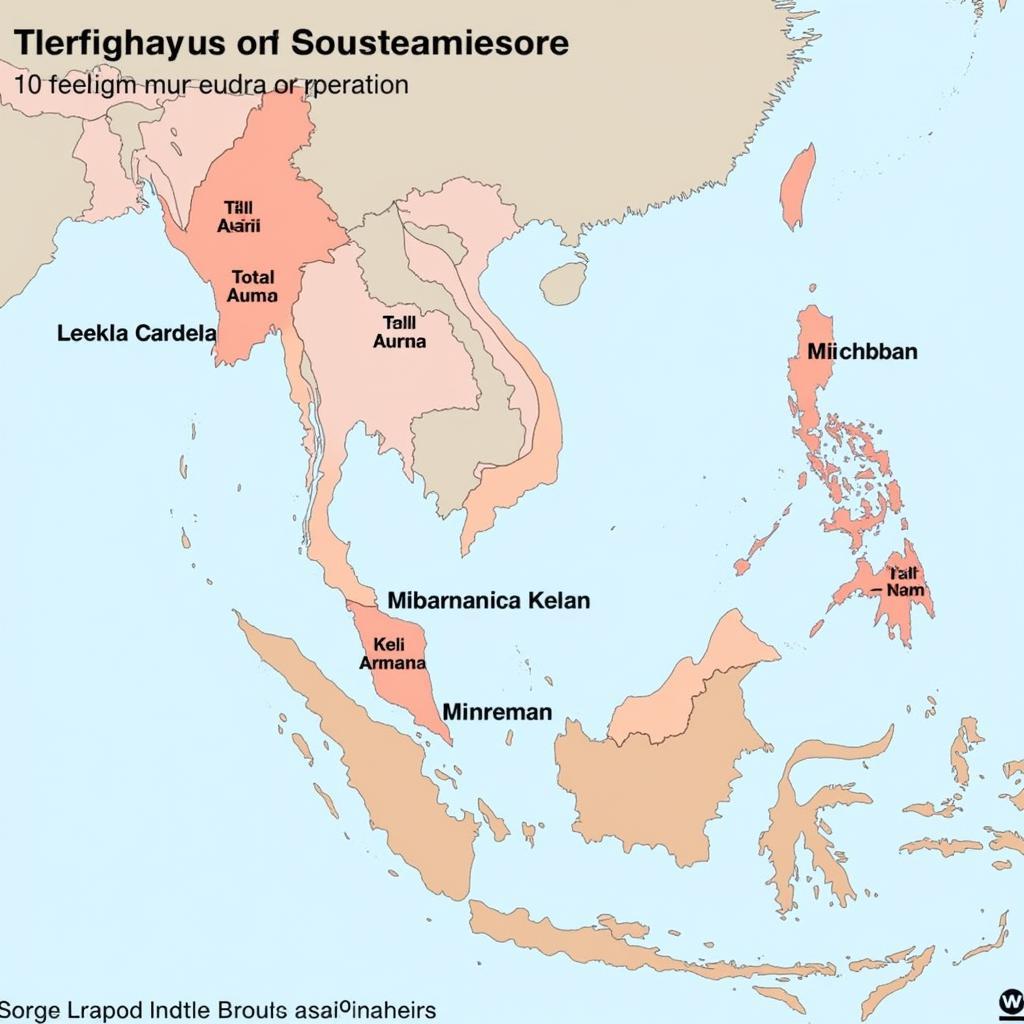ASEAN and SAARC (आसियान और सार्क in Hindi) are two prominent regional organizations in South Asia. While geographically close, they have distinct focuses and memberships. This article explores the differences and similarities between ASEAN and SAARC, providing a comprehensive overview for those interested in Asian geopolitics and regional cooperation.
Delving into ASEAN and SAARC: Key Differences and Similarities
ASEAN, the Association of Southeast Asian Nations, primarily focuses on economic cooperation, political stability, and socio-cultural development within Southeast Asia. SAARC, the South Asian Association for Regional Cooperation, aims to accelerate economic growth, social progress, and cultural development in South Asia. Though both organizations strive for regional advancement, their geographical scope and priorities differ. Understanding these nuances is key to understanding the dynamics of Asian international relations.
ASEAN: Southeast Asia’s Powerhouse
ASEAN comprises 10 member states: Brunei, Cambodia, Indonesia, Laos, Malaysia, Myanmar, the Philippines, Singapore, Thailand, and Vietnam. Its focus is on fostering collaboration in trade, investment, tourism, and cultural exchange. ASEAN has played a crucial role in maintaining peace and stability in the region, promoting economic growth, and improving the lives of its citizens.
SAARC: South Asia’s Collaborative Platform
SAARC, on the other hand, includes eight member states: Afghanistan, Bangladesh, Bhutan, India, Maldives, Nepal, Pakistan, and Sri Lanka. While also promoting economic cooperation, SAARC faces more challenges due to political tensions and security concerns amongst its members. This often hinders the organization’s ability to fully realize its potential.
Comparing ASEAN and SAARC (आसियान और सार्क): A Closer Look
Both ASEAN and SAARC share common goals of regional development and cooperation. However, ASEAN has achieved greater success in economic integration and fostering political stability compared to SAARC. This is largely attributed to a more unified political landscape and fewer internal conflicts within the ASEAN region.
What does ASEAN stand for in Hindi?
ASEAN in Hindi is आसियान (pronounced Aasiyaan). This translates to the Association of Southeast Asian Nations.
Why is SAARC important for India?
SAARC offers India a platform to engage with its neighbors on issues of mutual interest, including trade, security, and cultural exchange.
How does ASEAN benefit its members?
ASEAN membership provides numerous benefits, including increased trade opportunities, access to regional development funds, and a platform for political dialogue and cooperation.
Conclusion: ASEAN and SAARC’s Role in a Globalized World
Both ASEAN and SAARC (आसियान और सार्क) play vital roles in shaping the future of Asia. While facing distinct challenges, both organizations remain committed to fostering cooperation and development within their respective regions. Understanding the nuances of ASEAN and SAARC is crucial for anyone interested in Asian geopolitics and international relations.
FAQ
- What is the main difference between ASEAN and SAARC? The main difference lies in their geographical scope and membership: ASEAN focuses on Southeast Asia, while SAARC covers South Asia.
- Why is ASEAN considered more successful than SAARC? ASEAN’s relative success is attributed to greater political stability and a stronger focus on economic integration.
- What is the full form of SAARC? The full form is the South Asian Association for Regional Cooperation.
- How many members are there in ASEAN? ASEAN has 10 member states.
- What is the significance of ASEAN and SAARC for regional development? Both organizations promote regional cooperation, economic growth, and social progress within their respective areas.
- What challenges does SAARC face? SAARC faces challenges related to political tensions and security concerns among its member states.
- How does ASEAN contribute to global affairs? ASEAN’s economic power and political stability contribute to global trade and international relations.
For further assistance, please contact us at Phone Number: 0369020373, Email: aseanmediadirectory@gmail.com or visit our office at Thon Ngoc Lien, Hiep Hoa, Bac Giang, Vietnam. We have a 24/7 customer support team available to assist you.
